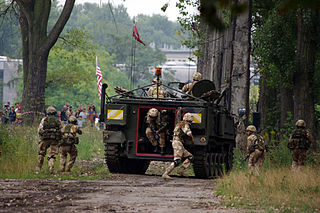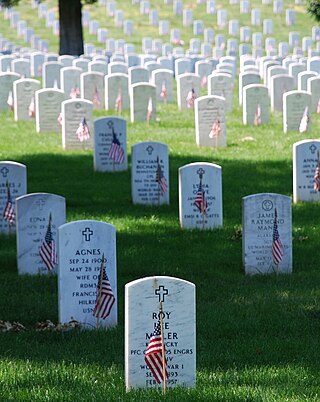
Historical reenactments is an educational or entertainment activity in which mainly amateur hobbyists and history enthusiasts dress in historic uniforms or costumes and follow a plan to recreate aspects of a historical event or period. This may be as narrow as a specific moment from a battle, such as the reenactment of Pickett's Charge presented during the 1913 Gettysburg reunion, or as broad as an entire period, such as Regency reenactment.

Living history is an activity that incorporates historical tools, activities and dress into an interactive presentation that seeks to give observers and participants a sense of stepping back in time. Although it does not necessarily seek to reenact a specific event in history, living history is similar to, and sometimes incorporates, historical reenactment. Living history is an educational medium used by living history museums, historic sites, heritage interpreters, schools and historical reenactment groups to educate the public or their own members in particular areas of history, such as clothing styles, pastimes and handicrafts, or to simply convey a sense of the everyday life of a certain period in history.

A Renaissance or Medieval fair is an outdoor gathering that aims to recreate a historical setting—most often the English Renaissance—for the amusement of its guests. Renaissance fairs generally include an abundance of costumed entertainers or fair-goers, musical and theatrical acts, art and handicrafts for sale, and festival food. These fairs are open to the public and typically commercial in nature; some are permanent theme parks, while others are short-term events in a fairground, winery, or other large public or private spaces. Some offer campgrounds for those who wish to stay more than one day.

American Civil War reenactment is an effort to recreate the appearance of a particular battle or other event associated with the American Civil War by hobbyists known as Civil War reenactors, or living historians.

Medieval reenactment is a form of historical reenactment that focuses on re-enacting European history in the period from the fall of Rome to about the end of the 15th century. The second half of this period is often called the Middle Ages. This multiplicity of terms is compounded by the variety of other terms used for the period.
"The Red Badge of Gayness" is the fourteenth episode of the third season of the animated television series South Park and the 45th episode of the series overall. It originally aired on November 24, 1999. In the episode, the boys participate in the South Park Civil War reenactment. To win a bet, Cartman convinces the reenactors to try and alter history and leads them throughout the United States. The episode's name is a reference to the war novel The Red Badge of Courage, and parodies Ken Burns' documentary miniseries The Civil War and the 1993 film Gettysburg.

The Battle of Hastings reenactment is a yearly reenactment of the Battle of Hastings, held at Battle Abbey in Battle, East Sussex, UK, and drawing participants from around the world. It takes place every year on the weekend nearest 14 October on the site of the historical battle, although it is often arranged across the hill rather than up it, to take account of the smaller number of participants and the need for spectators.

The Battle of Waterloo reenactment is an annual modern recreation of the 19th century Battle of Waterloo on the original battlefield in Waterloo, Belgium.

The Sealed Knot is a British historical association and charity, with many members from outside the United Kingdom, dedicated to costumed reenactment of battles and events surrounding the English Civil War.
The Vikings are a British-based society of historical re-enactors, dedicated to the study and re-enactment of the culture of the Viking Age (790–1066) and the display of authentic Dark Ages living history and combat.

Modern reenactment is historical reenactment of events of the modern period, most commonly events from the 18th century to the present.
In historical reenactment, authenticity is a measure of how close an item, prop, action, weapon, tactic, or custom is to what would actually have been used or done in the time period being depicted. For example, in most northern European medieval reenactment cotton is an inauthentic material—as opposed to wool or linen—though it would be authentic in more modern periods and events, such as American Civil War reenactment or World War II reenactment. Likewise, pop culture references and talking about modern events or objects is inauthentic.

Regia Anglorum, or simply Regia, is a Medieval reenactment organisation reenacting the life and times of the peoples who lived in and around the Islands of Britain from the time of Alfred the Great to Richard the Lionheart. Its members portray Anglo-Saxon, Viking, Norman and British living history from the period before the Norman Conquest. The society has gained in popularity as a result of being featured in prominent television programmes such as Michael Wood on Beowulf, Time Team and A History of Britain.
Classical reenactment tends to focus on portrayals of the Greco-Roman world, and especially on modern recreations of Roman legions and ancient Greek hoplites.
Historical re-enactment in Australia has been occurring since at least the early 1970s. With no conventional land battles and few protracted civil disturbances since the British colonisation of Australia, most military re-enactment in Australia focuses on events from other countries, including the European Feudal, medieval, and renaissance eras.

The Louisiana Renaissance Festival is a renaissance fair near Hammond, Louisiana. The festival takes place on a location that emulates a historical 16th century village (Albright) in England during the 1565 fall harvest festival. Renaissance fairs began in the 1960s in California. The Louisiana Renaissance Festival started in 2000 and explores Subcultural movements in Renaissance art, crafts, music, and theatre. Cast members are dressed as people would have been dressed during the 1560s.

The siege of Grol in 1627 was a battle between the Army of the Dutch Republic, commanded by Frederick Henry, Prince of Orange, and the Spanish-controlled fortified city of Grol, during the Eighty Years War and the Anglo–Spanish War in 1627. The Spanish Army, led by Hendrik van den Bergh, came to relieve Grol but too late. The siege lasted from 20 July until 19 August 1627, resulting in the surrender of the city to the Dutch army.

The Battle of Grolle is a regular historical reenactment of the siege of the fortified border town of Groenlo in the Achterhoek in 1627 during the Dutch Revolt. It is held in and around Groenlo itself every two years. The event lasts for three days and features a historic battle reenactment and a historic fair, with reenactors from many European countries. During the event, the reenactors try to relive the conditions of 1627 as faithfully as possible, without electricity or heating, while eating traditional food.
The following are minor or locally celebrated holidays related to the American Revolution.

The commemoration of the American Civil War is based on the memories of the Civil War that Americans have shaped according to their political, social and cultural circumstances and needs, starting with the Gettysburg Address and the dedication of the Gettysburg cemetery in 1863. Confederates, both veterans and women, were especially active in forging the myth of the Lost Cause of the Confederacy.













